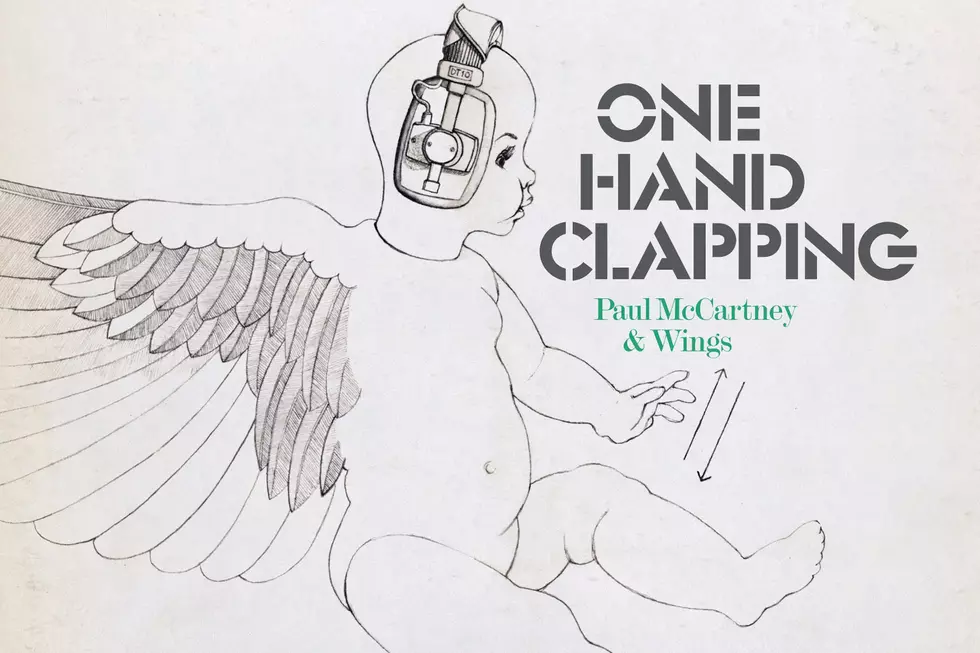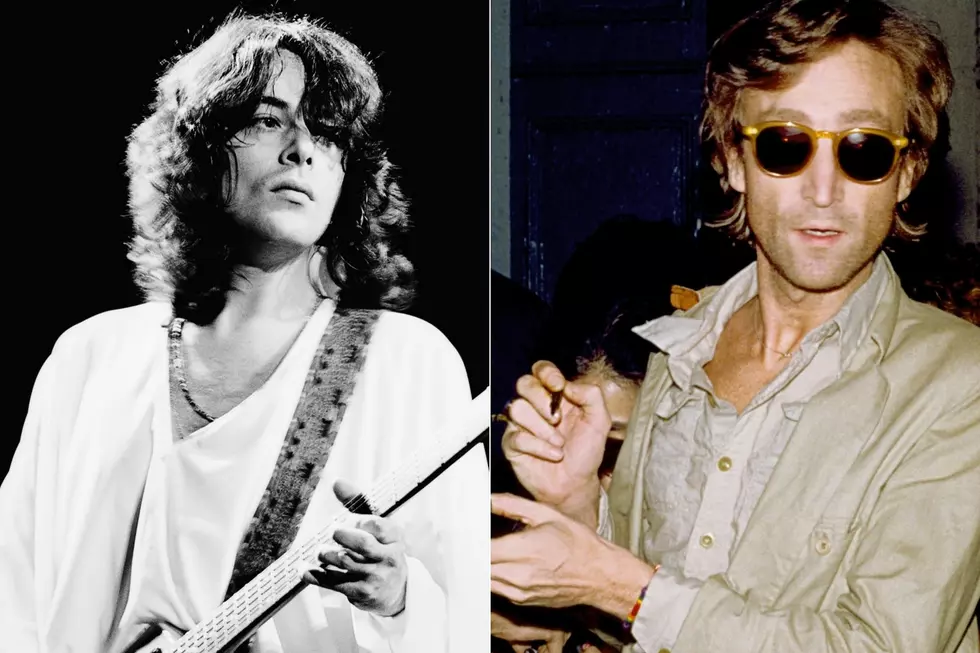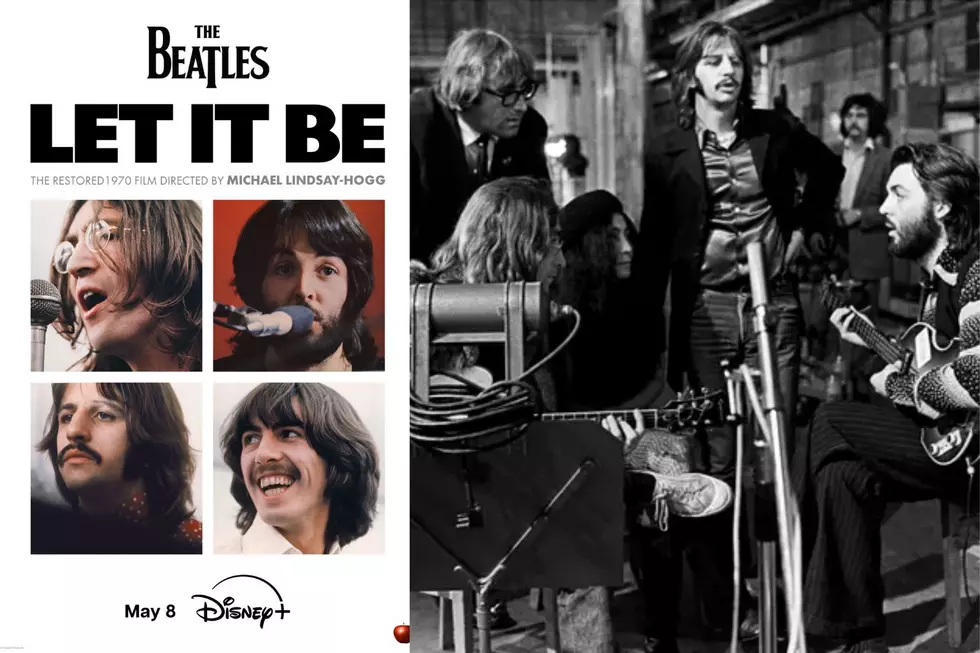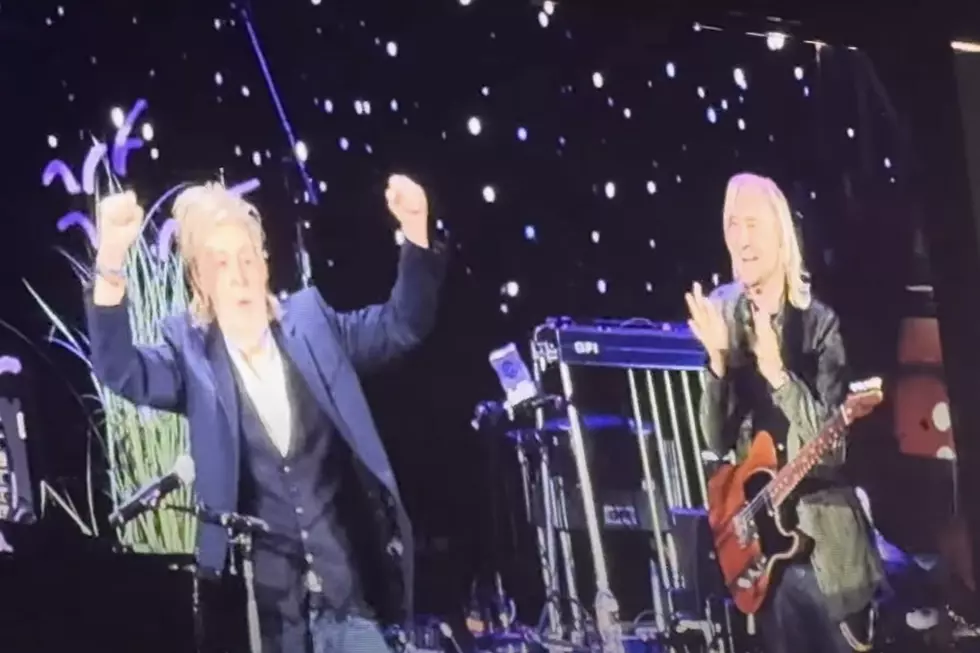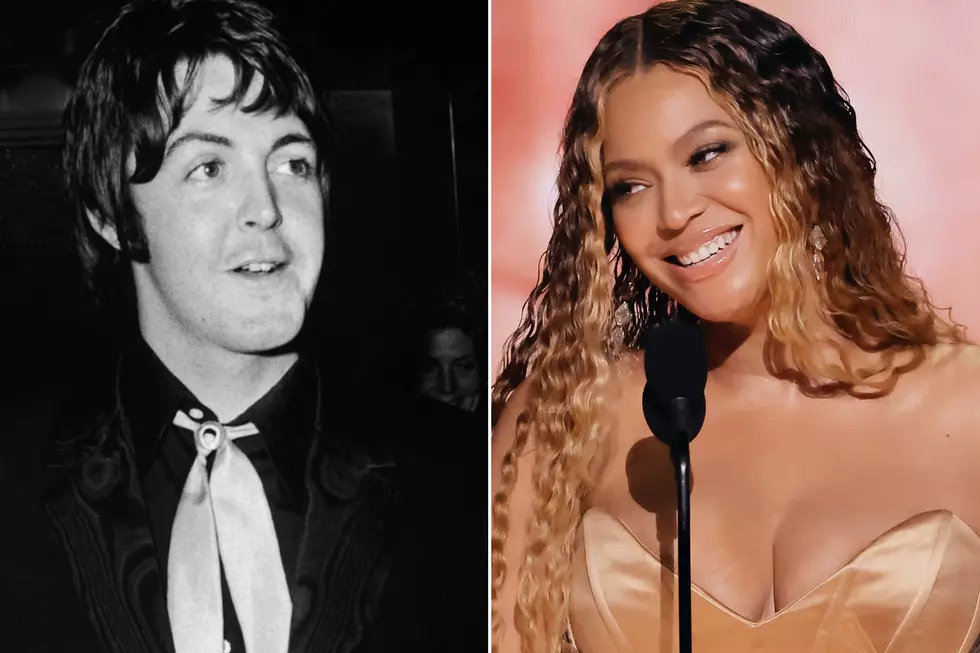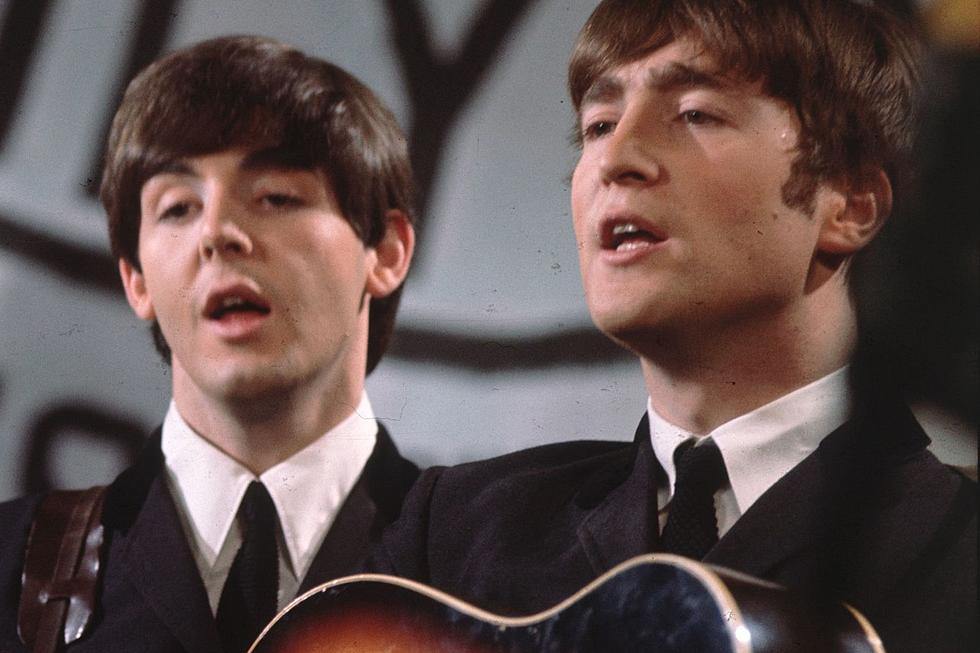
Top 10 Beatles Guitar Solos Not by George Harrison
George Harrison was the Beatles' acknowledged lead guitarist, but others subbed for him as far back as 1964's "You Can't Do That." There was also the trio approach employed on 1969's "The End," as first Paul McCartney, then Harrison and finally John Lennon traded two-bar solos three times.
In between, Lennon and McCartney would occasionally take over, even if Harrison continued to mime their guitar solos onscreen for "Another Girl" from the Help! movie and the promo clip for "Paperback Writer" – both of which were actually performed by McCartney.
This created some confusion, sometimes even within the group. "I don't think I was playing the guitar feedback" on 1967's "It's All Too Much," Harrison told Billboard in 1999. "As I say, I was playing the organ, so I think that was probably Paul that did that."
Close listeners can sort out the subtle differences in their approaches: Harrison was typically more formally constructed and Lennon had a far less conscious style, while McCartney is – perhaps surprisingly – capable of becoming quite unhinged. The search for new styles and sounds sometimes meant Harrison switched to rhythm work or to a different instrument entirely. Here are the very best examples, as we count down the Top 10 Beatles Guitar Solos Not by George Harrison.
No. 10. "For You Blue" from Let It Be (1970)
By: John Lennon
Harrison once accurately described this blues-based paean to wife Pattie Boyd as "a simple 12-bar song following all the normal 12-bar principles – except that it's happy-go-lucky!" Same with the solo, provided by Lennon and memorably encouraged ("go Johnny, go!") by Harrison. Lennon used a shotgun shell on a lap-steel guitar to get the song's rootsy wobble just right.
No. 9. "Back in the U.S.S.R." from The Beatles (1968)
By: Paul McCartney
McCartney nailed his "Back in the U.S.S.R." solo on the second of just two days of recording. That's fitting for a tongue-in-cheek track which grew out of loose writing sessions during a failed trip to study meditation in Rishikesh, India. McCartney also played drums, during a period when Ringo Starr briefly quit the Beatles. Lennon is featured on a six-string bass.
No. 8. "Yer Blues" from The Beatles (1968)
By: John Lennon
Similarly begun as a form of parody in Rishikesh, "Yer Blues" grew into something more raw and confessional – beginning an emotional journey that led directly to 1970's often-harrowing Plastic Ono Band. Lennon set up in a tiny room next to their main recording space, with only a four-track tape machine, then took the first solo for himself. The primitive setting led to obvious production issues, including a sharp edit at 3:16 and notable bleeds from earlier takes. But none of it takes away from Lennon's scalding turn.
No. 7. "Drive My Car" from Rubber Soul (1965)
By: Paul McCartney
McCartney found himself initially struggling with the words for the opening cut on Rubber Soul. "The lyrics I brought in were something to do with golden rings, which is always fatal," McCartney told Barry Miles in Many Years From Now. "'Rings' always rhymes with 'things,' and I knew it was a bad idea." The solo was another thing entirely. In fact, the increasingly fastidious McCartney arrived with all of the musical parts already worked out, then taught the others how he'd like "Drive My Car" to go.
No. 6. "Honey Pie" from The Beatles (1968)
By: John Lennon
Lennon openly complained about McCartney's penchant for prewar throwback songs, describing them as "granny-music shit," according to engineer Geoff Emerick. But that didn't stop Lennon from contributing his most intricate Beatles-era solo on "Honey Pie." Harrison remained impressed, decades later, calling it a "brilliant" turn that "sounded like Django Reinhardt or something."
No. 5. "I Want You (She's So Heavy)" from Abbey Road (1969)
By: John Lennon
Recorded off and on during a six-month period in early 1969, "I Want You" is a pieced-together cry of love that gave Lennon the chance to show off every side of his complicated nature. He leads the band through a series of rhythmic and time-signature changes, sometimes done through the editing process, toward a momentous ending with multiple overdubs. But not before downshifting into an utterly sensuous moment at 2:20, as Starr smartly moves from the tom into a jazz-like cadence on his snare.
No. 4. "Helter Skelter" from The Beatles (1968)
By: Paul McCartney
Driven by mild jealousy over a new song by the Who, McCartney set out to top them. "That was really all I wanted to do – to make a very loud, raunchy rock 'n' roll record with the Beatles," he said in Anthology. "And I think it's a pretty good one." The results, highlighted by McCartney's searing opening riff, point directly to the next decade's heavy-metal sounds. Still, his brief solo – and those heavenly background vocals – ground everything in Beatle-y familiarity.
No. 3. "Get Back" from Let It Be (1970)
By: John Lennon
Harrison famously walked out of the sessions for Let It Be, telling the others he'd "see you 'round the clubs." That perhaps left an opening for Lennon on the Beatles' follow-up single to "Hey Jude." (It also led to Billy Preston's late-period sideman work with the group; a returning Harrison brought him in to lighten the very heavy mood.) Lennon's playing here is a wonder of smart economy. He later said he was surprised by the opportunity: "When Paul was feeling kindly," Lennon told Rolling Stone in 1970, "he would give me a solo!"
No. 2. "Good Morning Good Morning" from Sgt. Pepper's Lonely Heart Club Band (1967)
By: Paul McCartney
This crunchy solo illustrates how McCartney ventured toward metal well before "Helter Skelter." As was so often the case with Lennon's music, "Good Morning Good Morning" never settles into a consistent time signature or groove, giving Starr an opportunity to goose every line with cool little fills. McCartney deftly adapts, opening a bag of meter-less sustain- and fuzz-based guitar tricks – all while unleashing some lightning-fast finger work.
No. 1. "Taxman" from Revolver (1966)
By: Paul McCartney
Here's how much producer George Martin loved this savage, very Jeff Beck-ish seven-bar solo: He tacked another snippet of it onto the end of the song, as well. "Stunning in its ferocity," as Geoff Emerick rightly noted, McCartney's turn may have been influenced by the frustration everyone was feeling as Harrison failed to work out his own version. Whatever the genesis, McCartney nailed it in a couple of takes – even adding a flourish that was sure to please his sidelined bandmate. "If you notice," Harrison said years later, "he did like a little Indian bit on it for me."
The Best Song on Every Beatles Album
See the Beatles in Rock’s Craziest Conspiracy Theories
More From Ultimate Classic Rock
